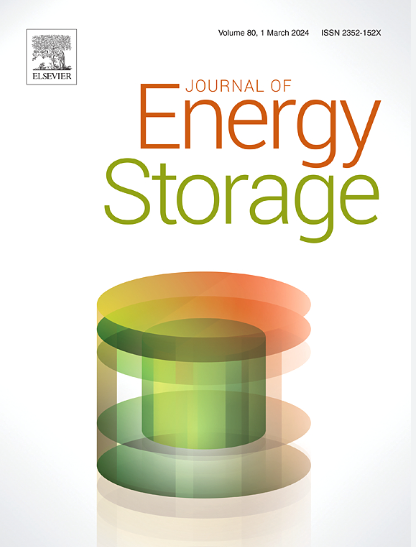Improving sodium ion storage performance by heteroatom strategy with nitrogen and sulfur doping carbon sheets
IF 8.9
2区 工程技术
Q1 ENERGY & FUELS
引用次数: 0
Abstract
Carbon materials have been researched as a promising candidate anode for sodium-ion batteries (SIBs) because of its high structure stability and inexpensive. Whereas, the low specific capacity and sluggish transport mechanism hampers its practical uses. In here, we develop a facile heteroatom doping method to obtain N, S co-doped carbon sheets (NS-CS). Specifically, carbon nanosheet structure can effectively accelerate Na+ transport rate. Meanwhile, the abundant N, S heteroatom doping can highly boost the adsorption of Na+ on the surface of NS-CS. When served as anodes for SIBs, the NS-CS could show a senior specific capacity of 326.1 mAh g−1 at 0.1 A g−1, an admirable rate capability of 165.7 mAh g−1 at 5 A g−1, and an excellent long-life cycling stability at 5 A g−1 (86% capacity retention after 3000 cycles). The density functional theory (DFT) calculations prove the N and S introducing in carbon skeleton avails the adsorption of Na+ during the sodiation procedure, which is explainable for the electrochemical performance improvement. Moreover, the galvanostatic intermittent titration technique (GITT) illustrates the fast Na+ diffusion kinetics of NS-CS.
氮硫掺杂碳片杂原子策略提高钠离子存储性能
碳材料因其结构稳定、价格低廉而成为钠离子电池极具潜力的负极材料。但其比容量低,运输机制迟缓,阻碍了其实际应用。在这里,我们开发了一种简单的杂原子掺杂方法来获得N, S共掺杂碳片(NS-CS)。具体而言,碳纳米片结构可以有效地加速Na+的输运速率。同时,丰富的N, S杂原子掺杂可以极大地促进Na+在NS-CS表面的吸附。当用作sib阳极时,NS-CS在0.1 a g−1时具有326.1 mAh g−1的高级比容量,在5 a g−1时具有165.7 mAh g−1的令人赞叹的倍率能力,并且在5 a g−1下具有优异的长寿命循环稳定性(循环3000次后容量保持86%)。密度泛函理论(DFT)计算证明,碳骨架中引入的N和S有利于钠离子在钠化过程中的吸附,这可以解释电化学性能的提高。此外,恒流间歇滴定技术(git)显示了NS-CS的快速Na+扩散动力学。
本文章由计算机程序翻译,如有差异,请以英文原文为准。
求助全文
约1分钟内获得全文
求助全文
来源期刊

Journal of energy storage
Energy-Renewable Energy, Sustainability and the Environment
CiteScore
11.80
自引率
24.50%
发文量
2262
审稿时长
69 days
期刊介绍:
Journal of energy storage focusses on all aspects of energy storage, in particular systems integration, electric grid integration, modelling and analysis, novel energy storage technologies, sizing and management strategies, business models for operation of storage systems and energy storage developments worldwide.
 求助内容:
求助内容: 应助结果提醒方式:
应助结果提醒方式:


